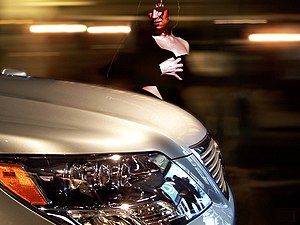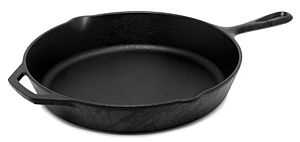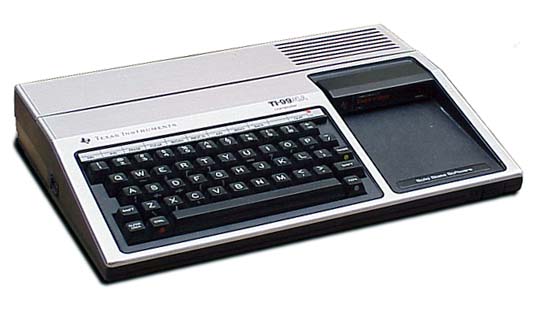If you follow this blog, you will notice that I have made several entries about cooking and
recipes (click to view them). But, it was to my dismay a few months ago, when my 2 decade old large cast iron skillet cracked and I had to get rid of it. I went out and replaced it with another one, and have begun again to properly season it. I had the first one just about "PERFECT" because my grandma taught me how to season cast iron skillets.
This entry is about doing some research about the oils used to cook or to season a cast iron skillet (or
Dutch oven). My grandma always instructed me to use peanut oil to season the cast iron before using it, and to apply a light layer to it after I had used, cleaned and was bout to store it, to keep it seasoned. She instructed me to keep olive oil and vegetable oil handy for use when cooking. Because I had to start the seasoning process with my new skillet, I got to thinking about how different cooking oils actually are. I found out a LOT about them...

To start with, I've always only used peanut oil to season my cast iron, never to cook in. I use olive oil for light frying or browning meat, and I use vegetable oil for heavier frying in a skillet or a touch of it in the wok. Oh, but when I make fried or scrambled eggs, I only use
Olivio spread because it is butter made out of olive oil, so it combines two of my favorite things. I have only done that, because that is what grandma told me to do. But in looking at some data about oils, I might change my perspective about what I use.
The reason grandma always told me to use peanut oil to season my cast iron, is because as best summarized in what is shared by
Wikipedia shares about Peanut Oil:
Peanut oil, also known as groundnut oil, is a mild tasting vegetable oil derived from peanuts.
Peanut oil is a common oil for frying foods, due to the high smoke point. The oil is used at Five Guys to cook their french fries.[4] Chick-Fil-A also uses peanut oil, for frying chicken.[5]
Using a mild tasting oil with a high smoke point means that "extra flavors" will not be added into what I'm cooking, but also it takes higher temps to get it to start smoking. Smoke point is the temperature that the oil reaches, before it starts to break down and emit a slight bluish smoke from your skillet or pot. And what causes that darn smoke detector to go off (
how to silence that smoke detector when cooking is another blog entry). Now, back to the oil.
A chart borrowed from Wikipedia explains Smoke Point very well. I am going to restrict it to only include the oils I use. Soybean oil is predominately used to make what is labeled as "vegetable oil" (
yeah, go read your label on your vegetable oil bottle).
| Olive oil |
Virgin |
391°F |
199°C[6] |
| Peanut oil |
Refined |
450°F |
232°C[1] |
| Soybean oil |
Semirefined |
350°F |
177°C |
So, it made a lot more sense to me what grandma was always saying, what happened in the kitchen when she used different oils. Seasoning the skillet with peanut oil means that there isn't any transfer of flavor to what you are cooking, but it is requires a higher temperature to smoke than any of the other oils you might use when cooking.

Okay, one more point that needs to be explained here, is "what temperature on the stove knob should I use when cooking with oils?" Some more research online, and some physical testing with some oil and thermometers are based on MY
electric stove knobs, that have the 10 settings shown at right. Gas stoves might be slightly different. To keep in mind, is that electric stove top burners are designed to heat between 200°F and 500°F. To calculate the settings for YOUR stove, remember that there are 300 degrees between 200 and 500. Count the number of marks you have on your knob, subtract 1, and divide 300 by that number. That will tell you how many degrees exist between the steps. Start with 200 on the LOW and calculate up from there. Since I have 10 settings on my knob, I subtract 1 to get 9 steps, and divide 300 by 9. So, starting at LOW on my knob as 200°F, I step up approximately 34 degrees (but I round to 35 just to keep the math easy in my mind), the following is an indicator about what the settings are on MY stove. I did the Celsius conversions for my chart by using this formula
(°F - 32) x 5/9 = °C (rounded to the nearest whole number).
| LOW | 200°F | 93°C |
| SIMMER | 235°F | 113°C |
| 2 | 270°F | 132°C |
| 3 | 305°F | 152°C |
| 4 | 340°F | 171°C |
| MEDIUM | 375°F | 191°C |
| 6 | 410°F | 210°C |
| 7 | 445°F | 229°C |
| 8 | 480°F | 249°C |
| HIGH | 500°F | 260°C |
Now, remember, they are APPROXIMATE. These are the kinds of things that you keep in your mind as mental references, they are NOT specific to your kitchen. Only YOU can figure out what your settings are by using oil in a pot, with a thermometer and writing the degrees next to your knob. Yes, you can also put your knob midway between two settings, but you'll have to figure out the approximate temp on your own (mine are approximately 17 degrees by doing that).
SO,
WTF does that have to do with oil? Ummmm.... in case you didn't figure it out yet, look at the smoke point of each oil, and the setting of the knob that falls just short of making your skillet or pot smoke. While it is tempting to heat up that skillet fast, using too high of a temperature will set off your
smoke alarm...trust me...I know what I am talking about, which is why I did this research. Keep the knob setting where it needs to be based on the oil that you are using, and slowly heat up the skillet for better success at cooking. If you need it fast, use an oil with a HIGHER smoke point or simply use the microwave.
I'm not going to go into the nutritional factors in comparing those oils, that may be ANOTHER blog entry (
become a follower to be notified when it appears). But, as I mentioned earlier, I am reconsidering what oils I use for what. I will always use the peanut oil to season my skillets, but I might switch over to using it to cook in because of the smoke point and the nutritional factors that make it appealing. The only reason why I use vegetable/soybean oil is because it is cheaper. So, I guess it has it's own place in the kitchen, I just will buy smaller sizes of bottles of it.
Good luck...and happy skilletting...cook on...














































